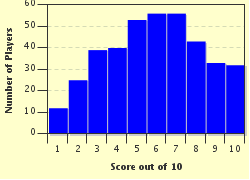Quiz Answer Key and Fun Facts
1. Let's start with a word that will give us some momentum! Suppose we want to make a conversion between two inertial reference frames -- say, between an observer on the ground and an observer on a moving train, a common situation when studying special relativity. Which of these words describes that conversion?
2. Although the "battery" was once a mysterious and perplexing invention, it's now almost impossible to imagine life without it. What is the primary function of an ideal battery in an electrical circuit?
3. Our next term is a singularly and astronomically exciting one: "black holes" have long captured the imagination of scientists and non-scientists alike. Which of these is NOT one of the basic features of a black hole?
4. Let's consider another "black" astronomical term -- although the "black body" is an important concept not only in astronomy, but also in thermodynamics. Which of these definitions best describes a black body?
5. Here's a phrase that will give us some pep! Nuclear physicists often speak of the "binding energy" of a nucleus, which sheds light on everything from fission to fusion. What is nuclear binding energy?
6. Thermodynamics problems often hinge on the relative probability of a system being in one state versus another -- an area in which the "Boltzmann factor" can be a big help. If a system is in thermal equilibrium, this weighting factor indicates that the probability of a particular state depends on what two properties?
7. "Brewster's angle" is important not only to writers of optics textbooks but also to everyday objects like sunglasses and camera filters. When light strikes a surface at this angle, only a very specific portion is reflected. Which of these choices describes the light that CANNOT be reflected from a surface that it strikes at Brewster's angle?
8. This term will put a different spin on things! Subatomic particles can be classified according to their intrinsic spin, which affects various aspects of their behavior. What is the term for a particle with integer spin (i.e. spin 0, spin 1, spin 2 ...)?
9. The "Bohr radius" emerged from an early (and incorrect) forebear of quantum mechanics, but remains a useful constant today. Equal to about 0.53 angstroms, it was originally supposed to describe the minimum distance between an electron orbit and the nucleus of what simple atom?
10. The "Biot-Savart Law" will be familiar to students of electrodynamics. This handy equation allows one to add up contributions from elements of electrical current in order to find what important electromagnetism quantity?
Source: Author
CellarDoor
This quiz was reviewed by FunTrivia editor
crisw before going online.
Any errors found in FunTrivia content are routinely corrected through our feedback system.

